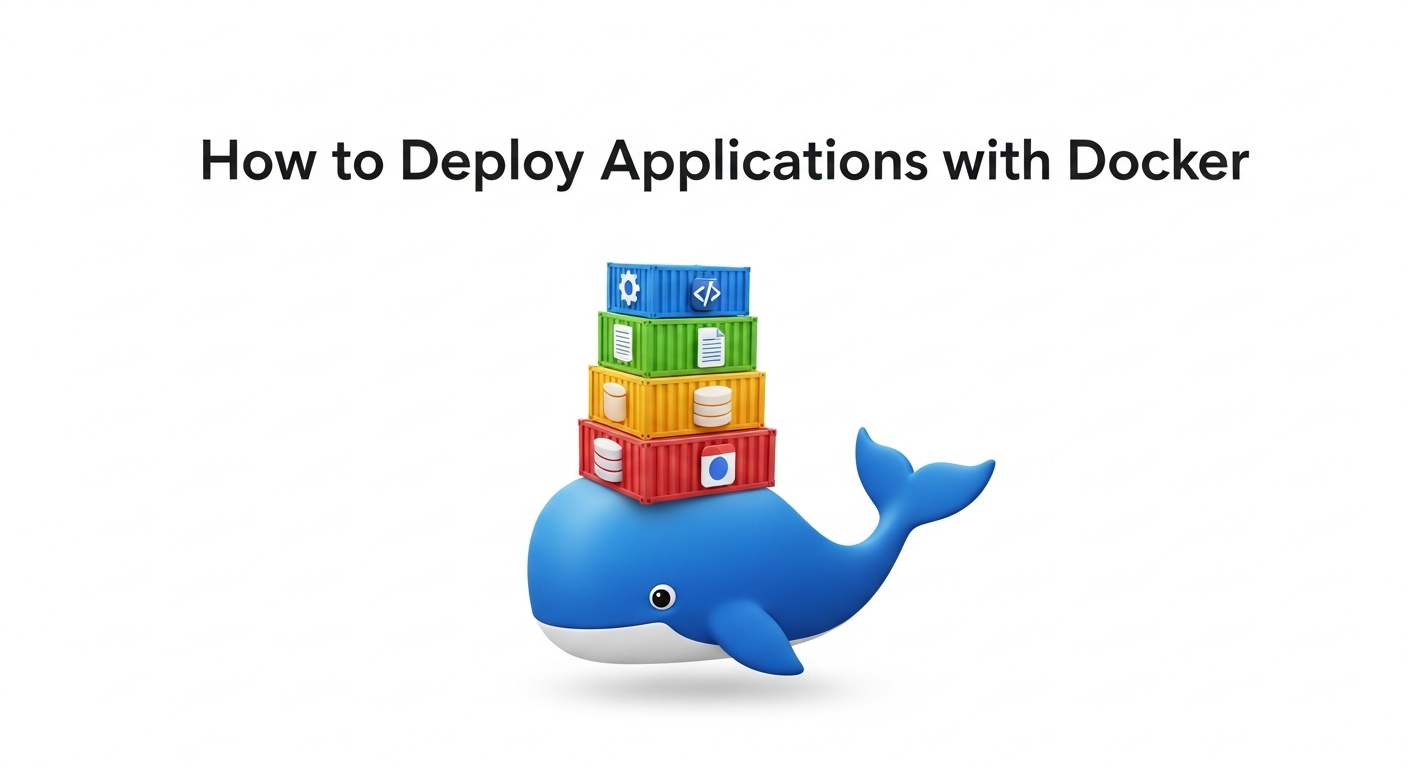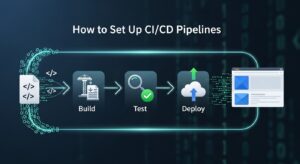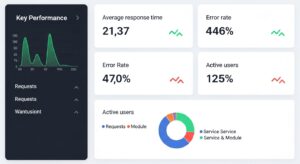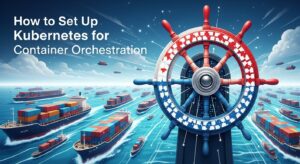When you’re ready to deploy applications with Docker, you’re embarking on a journey that will fundamentally transform how you think about application delivery and infrastructure management. Docker containerization has revolutionized the way modern developers approach deployment challenges, offering unprecedented consistency and scalability.
But before we dive into the technical implementation, let me ask you this: What’s your current experience with containerization? Have you encountered deployment inconsistencies between your development and production environments? Understanding where you stand will help us tailor this learning journey to your specific needs.
Understanding Docker Deployment Fundamentals
Docker deployment represents a paradigm shift from traditional application deployment methods. Instead of installing applications directly on servers, we package everything needed to run an application into lightweight, portable containers.
Think of it this way: if traditional deployment is like moving to a new house and hoping all your furniture fits, Docker deployment is like having a perfectly designed, self-contained mobile home that works anywhere. The container includes your application code, runtime environment, system libraries, and dependencies—everything needed for consistent execution.
Why Deploy Applications with Docker
The power of deploying applications with Docker lies in solving the infamous “it works on my machine” problem. Consider these scenarios:
Your development team builds an application that works perfectly on their local machines, but when deployed to staging or production, mysterious errors appear. Database connections fail, libraries are missing, or configuration differences cause crashes. Sound familiar?
Docker eliminates these issues by ensuring your application runs in an identical environment everywhere. The same container that runs on your laptop will run identically on your production servers.
Step 1: Containerizing Your Application for Docker Deployment
Let’s explore how to prepare your application for Docker deployment. The first step involves creating a Dockerfile—your blueprint for building consistent application containers.
What type of application are you working with? A web application, API service, or database-driven application? The containerization approach varies slightly depending on your application architecture.
Creating an Effective Dockerfile
Here’s a practical example of containerizing a Node.js application:
FROM node:18-alpine
WORKDIR /app
COPY package*.json ./
RUN npm ci --only=production
COPY . .
EXPOSE 3000
CMD ["node", "server.js"]
Notice how this Dockerfile follows best practices:
- Uses a specific, lightweight base image
- Sets a working directory
- Copies dependency files first for better caching
- Installs dependencies before copying source code
- Exposes the necessary port
- Defines the startup command
Can you identify why we copy package*.json files before copying the entire application? This optimization leverages Docker’s layer caching mechanism—if dependencies haven’t changed, Docker reuses the cached layer, significantly speeding up subsequent builds.
Step 2: Building and Testing Docker Images
Building Docker images for deployment requires attention to optimization and security. The docker build command transforms your Dockerfile into an executable image:
docker build -t your-app:latest .
But effective Docker deployment goes beyond basic building. Consider these optimization strategies:
Multi-stage Builds for Production Deployment
Multi-stage builds dramatically reduce image size and improve security by separating build dependencies from runtime requirements:
# Build stage
FROM node:18 AS builder
WORKDIR /app
COPY package*.json ./
RUN npm ci
COPY . .
RUN npm run build
# Production stage
FROM node:18-alpine
WORKDIR /app
COPY package*.json ./
RUN npm ci --only=production
COPY --from=builder /app/dist ./dist
CMD ["node", "dist/server.js"]
What advantages do you see in this approach? The final image contains only production dependencies and compiled code, resulting in smaller, more secure containers.
Testing Your Docker Images
Before deployment, thorough testing ensures your containerized application behaves correctly:
# Run container locally for testing
docker run -d -p 3000:3000 --name test-app your-app:latest
# Check container logs
docker logs test-app
# Execute commands inside running container
docker exec -it test-app /bin/sh
How might you verify that your application is responding correctly within the container? Testing should include functionality verification, performance validation, and security scanning.
Step 3: Docker Deployment Strategies and Orchestration
Deploying applications with Docker in production environments requires sophisticated orchestration strategies. Single-container deployments rarely suffice for real-world applications.
Container Orchestration Options
Modern Docker deployment typically involves orchestration platforms that manage multiple containers across distributed infrastructure:
Docker Compose suits development and small-scale production deployments:
version: '3.8'
services:
web:
build: .
ports:
- "3000:3000"
environment:
- NODE_ENV=production
depends_on:
- database
database:
image: postgres:15
environment:
POSTGRES_DB: myapp
POSTGRES_USER: user
POSTGRES_PASSWORD: password
volumes:
- pgdata:/var/lib/postgresql/data
volumes:
pgdata:
Kubernetes provides enterprise-grade orchestration for complex Docker deployments:
apiVersion: apps/v1
kind: Deployment
metadata:
name: app-deployment
spec:
replicas: 3
selector:
matchLabels:
app: myapp
template:
metadata:
labels:
app: myapp
spec:
containers:
- name: app
image: your-app:latest
ports:
- containerPort: 3000
Which orchestration approach aligns with your infrastructure requirements? Consider factors like team size, scalability needs, and operational complexity when choosing between Docker Compose, Kubernetes, or cloud-native solutions.
Step 4: Production Docker Deployment Best Practices
Production Docker deployment demands adherence to security, monitoring, and reliability best practices. Let’s explore critical considerations for robust application deployment.
Security Hardening for Docker Deployment
Security begins with your base images and extends through your entire deployment pipeline:
Use minimal base images:
FROM alpine:3.18
RUN apk add --no-cache nodejs npm
Run containers as non-root users:
RUN addgroup -g 1001 -S nodejs
RUN adduser -S nodejs -u 1001
USER nodejs
Implement resource constraints:
services:
web:
deploy:
resources:
limits:
cpus: '0.5'
memory: 512M
How do these security measures protect your deployed applications? Each practice reduces attack surfaces and limits potential damage from security breaches.
Health Checks and Monitoring
Effective Docker deployment includes comprehensive health monitoring:
HEALTHCHECK --interval=30s --timeout=3s --start-period=40s --retries=3 \
CMD curl -f http://localhost:3000/health || exit 1
services:
web:
healthcheck:
test: ["CMD", "curl", "-f", "http://localhost:3000/health"]
interval: 30s
timeout: 10s
retries: 3
What information should your health check endpoints provide? Consider including database connectivity, external service availability, and application-specific metrics.
Step 5: Advanced Docker Deployment Patterns
As your Docker deployment expertise grows, advanced patterns become essential for complex applications and high-availability requirements.
Blue-Green Deployment with Docker
Blue-green deployment enables zero-downtime updates by maintaining two identical production environments:
# Deploy new version to green environment
docker-compose -f docker-compose.green.yml up -d
# Test green environment
curl http://green-environment.example.com/health
# Switch traffic from blue to green
# (typically done via load balancer configuration)
# Cleanup old blue environment
docker-compose -f docker-compose.blue.yml down
Rolling Updates and Canary Deployments
Modern container orchestration platforms support sophisticated deployment strategies:
Kubernetes Rolling Update:
spec:
strategy:
type: RollingUpdate
rollingUpdate:
maxUnavailable: 1
maxSurge: 1
Canary Deployment Configuration:
spec:
replicas: 10
strategy:
canary:
steps:
- setWeight: 10
- pause: {duration: 600}
- setWeight: 50
- pause: {duration: 600}
How might you implement automated rollbacks if canary deployments detect issues? Consider integrating monitoring metrics and automated decision-making into your deployment pipeline.
Docker Deployment Performance Optimization
Optimizing Docker deployment performance involves multiple layers, from image construction to runtime configuration.
Image Optimization Strategies
Technique | Description | Impact |
Multi-stage builds | Separate build and runtime environments | 50-80% size reduction |
Layer caching | Optimize Dockerfile instruction order | 2-5x faster builds |
Base image selection | Choose minimal, purpose-built images | Improved security and performance |
Dependency management | Remove unnecessary packages | Reduced attack surface |
Runtime Performance Tuning
Docker deployment performance depends heavily on resource allocation and container configuration:
services:
web:
deploy:
resources:
limits:
cpus: '2'
memory: 2G
reservations:
cpus: '1'
memory: 1G
ulimits:
nofile:
soft: 20000
hard: 40000
Consider your application’s resource requirements. How do CPU and memory constraints affect your deployment strategy? Proper resource allocation prevents resource contention and ensures predictable performance.
Monitoring and Logging Docker Deployments
Comprehensive monitoring transforms Docker deployment from a one-time activity into an ongoing operational capability.
Centralized Logging Solutions
Docker deployment generates logs across multiple containers and services. Centralized logging aggregates this information for analysis:
services:
web:
logging:
driver: "json-file"
options:
max-size: "10m"
max-file: "3"
Popular logging solutions for Docker deployment include:
- ELK Stack (Elasticsearch, Logstash, Kibana) for comprehensive log analysis
- Fluentd for flexible log collection and forwarding
- Grafana Loki for efficient log aggregation and querying
External resources for advanced logging configurations:
Application Performance Monitoring
Monitoring Docker deployments requires visibility into both container metrics and application performance:
services:
prometheus:
image: prom/prometheus
ports:
- "9090:9090"
volumes:
- ./prometheus.yml:/etc/prometheus/prometheus.yml
grafana:
image: grafana/grafana
ports:
- "3000:3000"
What metrics are most critical for your Docker deployment monitoring strategy? Consider tracking container resource utilization, application response times, error rates, and business-specific indicators.
Troubleshooting Common Docker Deployment Issues
Even well-planned Docker deployments encounter challenges. Understanding common issues and their solutions accelerates problem resolution.
Container Startup Failures
When containers fail to start during Docker deployment, systematic troubleshooting reveals root causes:
# Check container logs for startup errors
docker logs container-name
# Inspect container configuration
docker inspect container-name
# Debug by running container interactively
docker run -it --entrypoint /bin/sh image-name
Common startup issues include:
- Missing environment variables
- Incorrect file permissions
- Port binding conflicts
- Resource constraints
Network Connectivity Problems
Docker deployment networking can be complex, especially in orchestrated environments:
# Test container network connectivity
docker exec container-name ping external-service
# Inspect Docker networks
docker network ls
docker network inspect bridge
How do you approach network debugging in containerized environments? Understanding Docker’s networking model helps identify connectivity issues between containers and external services.
Future-Proofing Your Docker Deployment Strategy
Technology evolution requires adaptive Docker deployment approaches that accommodate changing requirements and emerging technologies.
Emerging Trends in Container Deployment
Consider how these trends might influence your Docker deployment strategy:
- Serverless Containers: Platforms like AWS Fargate and Google Cloud Run abstract infrastructure management while maintaining container benefits.
- Edge Computing: Deploying applications with Docker at edge locations reduces latency and improves user experience.
- GitOps: Infrastructure-as-code approaches integrate Docker deployment with version control workflows.
What aspects of your current deployment process would benefit from these emerging approaches? Evaluate how new technologies align with your organizational objectives and technical requirements.
Building Deployment Automation
Mature Docker deployment strategies emphasize automation and repeatability:
# CI/CD Pipeline Example
stages:
- build
- test
- security-scan
- deploy
build:
script:
- docker build -t $CI_REGISTRY_IMAGE:$CI_COMMIT_SHA .
- docker push $CI_REGISTRY_IMAGE:$CI_COMMIT_SHA
deploy:
script:
- kubectl set image deployment/app app=$CI_REGISTRY_IMAGE:$CI_COMMIT_SHA
- kubectl rollout status deployment/app
How might you implement automated rollbacks and deployment validation in your pipeline? Robust automation reduces manual errors and enables faster, more reliable deployments.
Conclusion
Deploying applications with Docker transforms software delivery from a complex, error-prone process into a streamlined, repeatable operation. Through containerization, orchestration, and best practices implementation, Docker deployment enables organizations to achieve unprecedented consistency and scalability.
The journey from basic containerization to sophisticated production deployment requires continuous learning and adaptation. As you implement these strategies, consider how each technique addresses your specific challenges and organizational objectives.
What’s your next step in mastering Docker deployment? Whether you’re implementing your first containerized application or optimizing existing deployments, the principles and practices outlined in this guide provide a foundation for success.
Effective Docker deployment combines technical expertise with operational excellence. Start with simple implementations, gradually incorporating advanced patterns as your confidence and requirements grow. The investment in learning Docker deployment pays dividends through improved reliability, faster deployments, and enhanced scalability.











